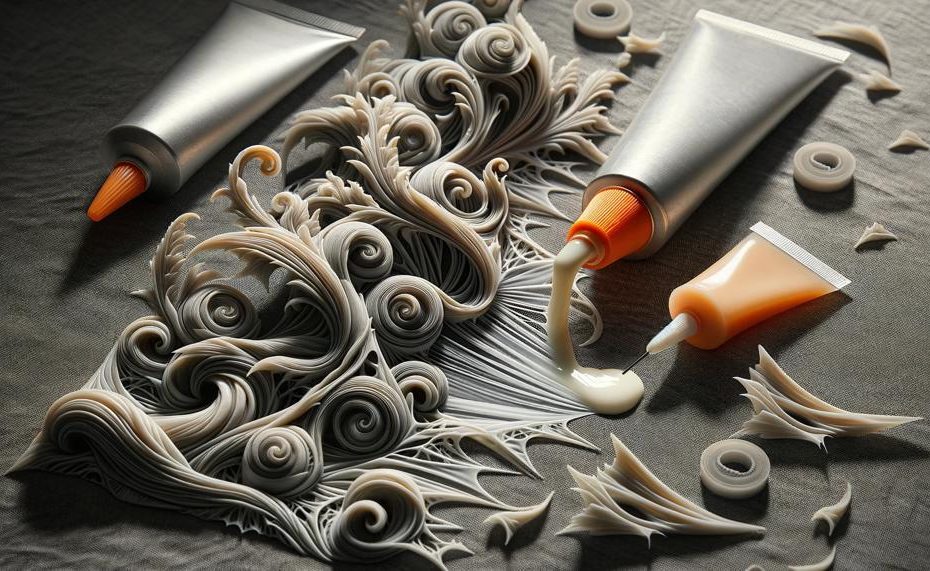Yes, you can absolutely use fabric glue on stretchy fabrics, opening up a world of possibilities for your projects. While sewing remains the traditional method, fabric glue offers a convenient and versatile alternative, especially when dealing with tricky stretchy materials. Here’s what you need to know:
🔹 Fabric glue is a game-changer for joining stretchy fabrics, eliminating the hassle of sewing.
🔹 Choose specialized glues designed for stretchy materials to ensure a strong, flexible bond.
🔹 Test the glue on an inconspicuous area first to check for compatibility and staining.
🔹 Proper preparation, application, and care instructions are crucial for long-lasting results.
🔹 Consider the project’s intended use, as fabric glue may not be as durable as sewing for some applications.
With the right techniques and products, fabric glue can unlock endless creative opportunities for your stretchy fabric projects, from fashion to home decor and beyond. Embrace the convenience and versatility of this game-changing approach.
Table of Contents
- 1 Factors to Consider When Using Fabric Glue on Stretchy Fabrics
- 2 Types of Fabric Glue Suitable for Stretchy Fabrics
- 3 Application Method for Using Fabric Glue on Stretchy Fabrics
- 4 Advantages and Disadvantages of Using Fabric Glue on Stretchy Fabrics
- 5 Testing the Adhesive Before Applying it to the Entire Fabric
- 6 Alternatives to Using Fabric Glue on Stretchy Fabrics
- 7 Conclusion
Factors to Consider When Using Fabric Glue on Stretchy Fabrics
When using fabric glue on stretchy fabrics, the key factors to ensure a successful and long-lasting bond are:
Fabric Type and Stretchiness
Understand the specific fabric you’re working with and its level of stretchiness to choose a compatible glue. Some fabrics like spandex or jersey knits have more stretch than others.
Glue Formulation
Select a fabric glue specifically designed for stretchy or flexible fabrics. Look for labels like “stretchable” or “flexible” on the glue packaging.
Bond Strength and Flexibility
Ensure the glue provides a strong bond while maintaining the fabric’s elasticity. A flexible bond will prevent cracking or peeling as the fabric stretches.
Drying Time
Allow sufficient drying time for the glue to cure completely. Rushing the process may result in a weak bond or a stiff, inflexible seam.
Washability
Check if the glue is washable and follow the care instructions for both the fabric and glue to maintain durability after washing.
Types of Fabric Glue Suitable for Stretchy Fabrics
When working with stretchy fabrics, it’s crucial to use the appropriate fabric glue that can accommodate the material’s flexibility and movement. Here are the different types of fabric glue suitable for stretchy fabrics:
| Type of Fabric Glue | Description | Suitability for Stretchy Fabrics |
|---|---|---|
| Spray Adhesive | A temporary or permanent adhesive that comes in an aerosol can and is sprayed onto the fabric. | Suitable for stretchy fabrics as it allows for flexibility and movement. Look for spray adhesives specifically designed for stretchy materials. |
| Fabric Glue Stick | Similar to a glue stick for paper, these are solid adhesives that can be applied directly to the fabric. | Some fabric glue sticks are formulated to be flexible and suitable for stretchy fabrics. Check the product label for compatibility. |
| Liquid Fabric Glue | A liquid adhesive that can be applied with a brush or applicator bottle. | Look for liquid fabric glues that are specifically designed for stretchy fabrics, as they provide a flexible and durable bond. |
When choosing a fabric glue for stretchy fabrics, it’s essential to consider factors such as bond strength, flexibility, and washability. Some adhesives may stiffen or damage the fabric, so it’s advisable to test the glue on a small, inconspicuous area first.
Additionally, proper preparation and application techniques, as recommended by the manufacturer, are crucial for achieving successful and long-lasting results.
Application Method for Using Fabric Glue on Stretchy Fabrics
| 1 | Opt for a specialized fabric adhesive formulated for stretchy materials, ensuring flexibility and stretchability. | Conventional glues may crack or peel when the fabric stretches. |
| 2 | Meticulously prepare the fabric surface by cleaning and degreasing it to promote optimal adhesion. | Any residue or finish could impede the bond’s strength. |
| 3 | Conduct a test patch on an inconspicuous area to verify compatibility and avoid potential staining. | Stretchy fabrics can react differently to adhesives. |
| 4 | Apply the glue in a thin, even layer, avoiding excessive amounts that could seep through the fabric. | Too much glue may cause stiffness or discoloration. |
| 5 | Promptly join the glued sections while the adhesive is still tacky, gently smoothing out any wrinkles or bubbles. | This ensures a tight, uniform bond throughout. |
| 6 | Allow ample drying time as per the manufacturer’s instructions before stretching or wearing the garment. | Premature stress could compromise the bond’s integrity. |
| 7 | For long-term durability, consider the fabric’s washability and the glue’s resistance to laundering. | Some adhesives may degrade or become brittle after repeated washing. |
Advantages and Disadvantages of Using Fabric Glue on Stretchy Fabrics
Using fabric glue on stretchy fabrics can offer both advantages and disadvantages. Here’s a breakdown:
| Advantages | Disadvantages |
|---|---|
|
|
The primary advantage of using fabric glue on stretchy fabrics is the convenience and ease of application. It simplifies the bonding process, eliminating the need for sewing or stitching, which can be time-consuming and challenging with stretchy materials. Additionally, specialized fabric glues are designed to be compatible with various stretchy fabrics, making them suitable for a wide range of projects.
However, it’s essential to note that fabric glue may not be as durable as traditional sewing methods, especially when dealing with stretchy fabrics that undergo frequent stress or movement. There is also a risk of the glue causing stiffness or reducing the fabric’s flexibility, which can be undesirable for certain applications.

Furthermore, some glues may leave behind residue or stains if not specifically formulated for use on stretchy fabrics, potentially compromising the aesthetic appeal of the project.
Testing the Adhesive Before Applying it to the Entire Fabric
To test the adhesive before applying it to the entire stretchy fabric, follow these steps:
| Acquire a sample swatch | Cut a small, inconspicuous swatch from the same stretchy fabric you intend to use for your project. | Textile swatch | |||||||||||
| Prepare the test area | Ensure the test area is clean, dry, and free from any contaminants that could interfere with the adhesion. | Surface preparation | |||||||||||
| Apply the adhesive | Following the manufacturer’s instructions, apply a thin, even layer of the adhesive to both the fabric swatch and the test area. Allow the adhesive to become tacky before bonding. | Fabric adhesive application | |||||||||||
| Bond the swatch | Carefully press the swatch onto the test area, applying firm, even pressure to ensure good contact between the surfaces. | Bonding fabric with adhesive | |||||||||||
| Allow curing | Let the bond cure according to the manufacturer’s recommended drying time, typically 24-48 hours. | Curing fabric adhesive | |||||||||||
| Evaluate the bond | Once fully cured, inspect the bond and test its flexibility and strength by gently stretching and manipulating the swatch.
Alternatives to Using Fabric Glue on Stretchy FabricsYes, there are several alternatives to using fabric glue on stretchy fabrics that can provide a secure bond while preserving the fabric’s elasticity. Here are some effective options:
When working with stretchy fabrics, it’s crucial to choose an adhesive option that can accommodate the fabric’s elasticity without compromising its stretchiness or causing stiffness. Trusted fabric experts recommend testing the chosen adhesive on a fabric swatch first to ensure it meets your project’s requirements. Additionally, some sewing techniques like zig-zag stitching, stretch stitches, or using a stretch needle can help secure stretchy fabrics without the need for adhesives. ConclusionFabric glue offers an innovative solution for bonding stretchy fabrics, unlocking new creative possibilities. While traditional sewing methods remain reliable, adhesives provide unmatched convenience and versatility when tackling tricky stretchy materials. The key to success lies in selecting specialized flexible glues designed explicitly for these fabrics’ unique properties. A meticulous approach, including surface preparation, compatibility testing, and following application instructions, ensures a strong yet flexible bond that moves with the fabric. However, it’s essential to weigh the advantages of fabric glue’s simplicity against potential drawbacks like reduced durability or stiffness compared to sewing. The intended use and washability requirements should guide your choice. Embracing this game-changing technique with the proper precautions can elevate your stretchy fabric projects to new heights, whether in fashion, home decor, or beyond. You may also like: |






